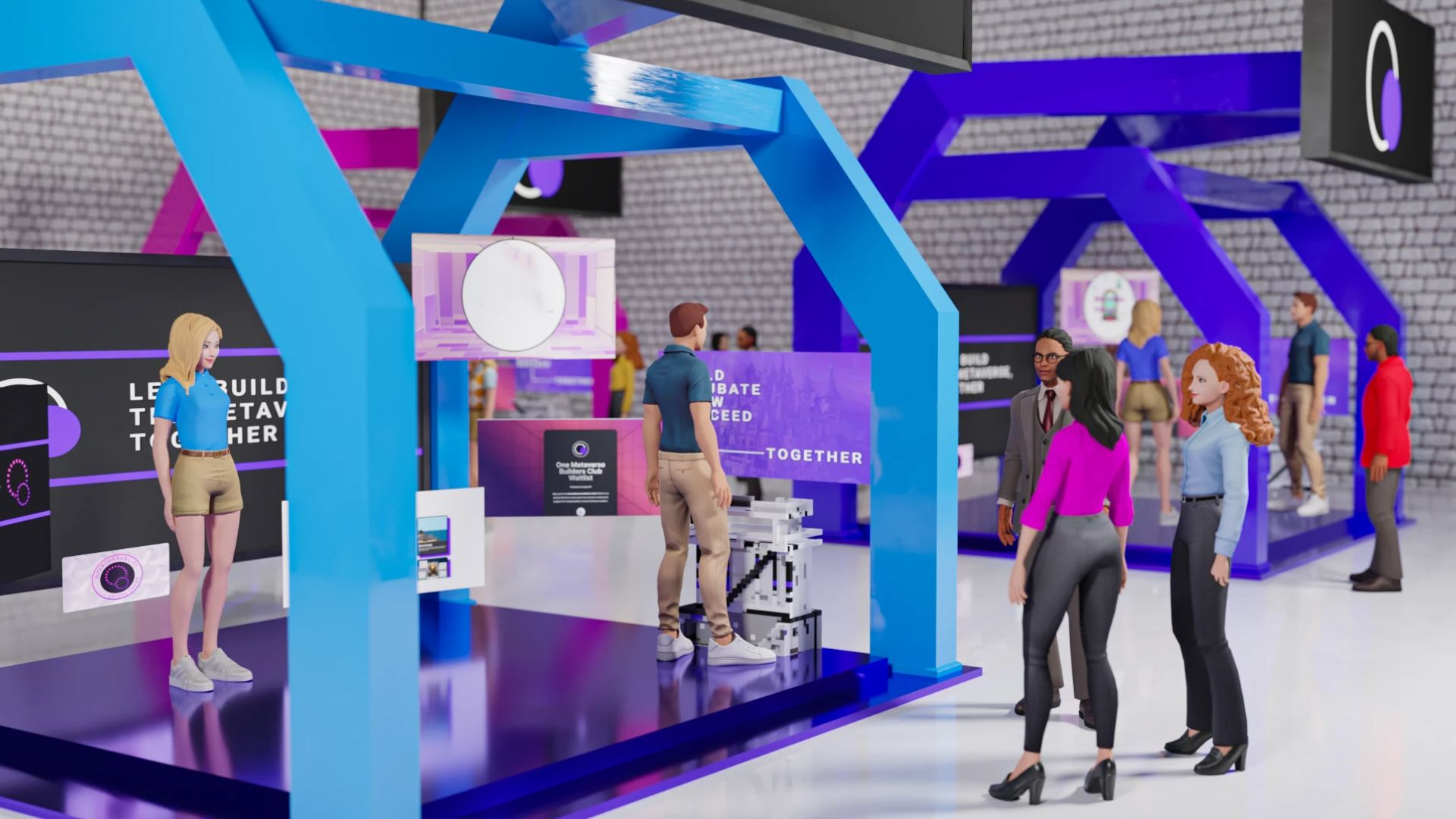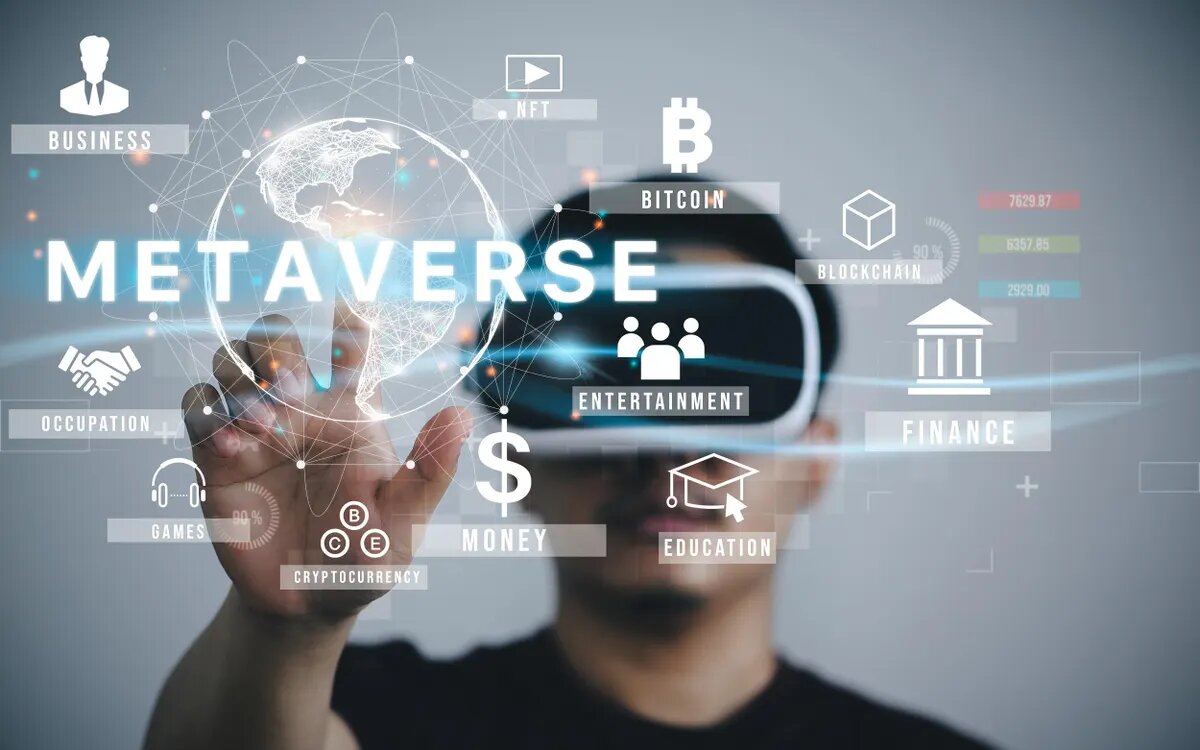What is the Metaverse?
The Metaverse is an interconnected virtual reality space that mirrors the physical world and enables users to interact with each other and digital objects in real-time. It is a seamless integration of various digital platforms, including virtual reality (VR), augmented reality (AR), and the internet. In simple terms, it can be described as a collective virtual shared space, where users can create, explore, and engage with interactive experiences.
Imagine stepping into a virtual world where you can meet and socialize with people from across the globe, visit simulated locations, attend virtual events, and even conduct business transactions. The Metaverse offers limitless possibilities and blurs the line between the physical and digital realms.
One key aspect of the Metaverse is its persistence. Unlike traditional virtual reality experiences that are accessed through specific applications or games, the Metaverse is an ongoing, always-on space that continues to exist and evolve even when users are not actively engaged. It is a dynamic ecosystem with a range of interconnected digital platforms and experiences.
The concept of the Metaverse has gained popularity in recent years with the rise of virtual reality technology and advancements in internet connectivity. It has captured the imagination of tech enthusiasts, entrepreneurs, and content creators who see its potential to revolutionize communication, entertainment, and commerce.
While the idea of the Metaverse may seem futuristic, elements of it are already present in various digital platforms. Online multiplayer games, social media platforms, and virtual meeting spaces are early examples of the Metaverse in action. However, the true vision of the Metaverse involves a seamless integration of these platforms, allowing users to move freely between different digital environments.
Overall, the Metaverse is an immersive, interactive, and interconnected digital realm that promises to reshape the way we work, communicate, and experience the world. It represents a paradigm shift in the way we engage with digital content and has the potential to revolutionize industries ranging from gaming and entertainment to education and healthcare.
The Virtual World Inside the Metaverse
Within the Metaverse, there exists a vast virtual world that offers endless possibilities and experiences. This digital realm is created by a combination of user-generated content and professionally developed environments.
Users can explore a multitude of virtual landscapes, ranging from bustling cityscapes to serene natural environments. They can navigate through virtual streets, visit virtual venues such as theaters or art galleries, or even embark on virtual adventures in fantastical realms. The virtual world inside the Metaverse is limited only by the imagination of its creators and participants.
One of the defining features of the virtual world is its interactivity. Users can interact with objects, other users, and the environment itself. They can pick up and manipulate virtual objects, engage in virtual conversations with avatars representing other individuals, and even shape the virtual world through their actions and creations.
Collaboration is a key component of the virtual world inside the Metaverse. Users can work together to build and modify virtual environments, create virtual art installations, or organize virtual events. The virtual world becomes a space for creativity, expression, and collaboration, where individuals from different corners of the globe can come together and contribute to a shared experience.
Additionally, the virtual world inside the Metaverse offers opportunities for entertainment and leisure. Users can attend virtual concerts, watch movies in virtual theaters, or participate in virtual sports and games. It provides a rich and immersive environment where individuals can experience entertainment in entirely new and exciting ways.
As the Metaverse continues to evolve, the virtual world inside it will become increasingly sophisticated. Advancements in technology, such as virtual reality and augmented reality, will enhance the immersion and realism of the virtual experiences. Artificial intelligence and machine learning will contribute to the development of more intelligent and dynamic virtual environments.
In summary, the virtual world inside the Metaverse is a dynamic, interactive, and collaborative space where users can explore, create, and interact with others. It offers limitless possibilities for entertainment, creativity, and social interaction. As technology continues to advance, the virtual world inside the Metaverse will only become more vibrant and expansive, opening up new frontiers of digital experiences.
How the Metaverse is Created
The creation of the Metaverse involves a combination of technological infrastructure, digital content, and user participation. It is a collaborative effort between developers, creators, and users to build and shape this interconnected virtual reality space.
At its core, the Metaverse relies on a robust technological infrastructure that supports seamless connectivity and interaction. This infrastructure includes high-speed internet, cloud computing, and advanced networking technologies. These elements enable users to access the Metaverse from various devices and locations, and allow for real-time communication and synchronization of virtual experiences.
Content creation plays a crucial role in the development of the Metaverse. User-generated content (UGC) is a significant component, as individuals contribute to the creation of virtual environments, objects, and experiences. This can range from designing virtual avatars and clothing to constructing virtual buildings and landscapes. UGC empowers users to personalize their experiences and contribute to the overall growth and diversity of the Metaverse.
Professional content creators, such as game developers and digital artists, also play a vital role in the creation of the Metaverse. They design and build immersive virtual environments, develop interactive experiences, and utilize cutting-edge technologies to enhance the realism and engagement of the Metaverse. Their expertise and creativity shape the overall landscape and quality of the virtual world within the Metaverse.
Standards and protocols are also essential for the creation and interoperability of the Metaverse. Developing common frameworks and guidelines ensures that different platforms and experiences within the Metaverse can seamlessly interact and integrate with each other. This interoperability allows users to move between different virtual spaces and engage in cross-platform interactions.
Furthermore, the creation of the Metaverse requires ongoing innovation and research. Advancements in technologies such as virtual reality, augmented reality, artificial intelligence, and blockchain have the potential to revolutionize the Metaverse and unlock new possibilities. These technologies are continually evolving and shaping the future of the Metaverse.
Overall, the creation of the Metaverse is a collaborative effort that combines technological infrastructure, user-generated content, professional content creation, standards, and innovation. It is an ongoing process that involves continuous development and improvement to create a diverse and immersive virtual reality space for users to explore, create, and interact within.
How Does Interacting with the Metaverse Work?
Interacting with the Metaverse involves various technologies and modes of engagement that allow users to navigate, communicate, and engage with the virtual world. It is through these interactions that users can fully immerse themselves in the Metaverse and unlock its vast potential.
The primary mode of interaction in the Metaverse is through virtual reality (VR) and augmented reality (AR) devices. VR devices, such as headsets and hand controllers, create an immersive experience by rendering a virtual environment that users can see, hear, and interact with. AR devices, such as smart glasses and mobile devices, overlay virtual elements onto the real world, blending digital and physical interactions.
Using VR or AR devices, users can navigate and explore the virtual world inside the Metaverse. They can move through virtual environments, teleport to different locations, and interact with virtual objects and characters. This level of interactivity and immersion makes the Metaverse feel like a tangible and responsive space.
In addition to VR and AR, users can communicate and socialize with others in the Metaverse through various means. Virtual chat systems, voice recognition, and gesture-based interactions enable users to engage in real-time conversations and express themselves in virtual spaces. Social presence within the Metaverse is a significant aspect of interacting, allowing users to connect with friends, meet new people, and collaborate on projects.
The Metaverse also incorporates traditional elements of the internet, such as web browsing and search functionalities. Users can access web pages within the virtual world, browse for information, and interact with web-based content. This integration of the internet allows for seamless transitions between the physical and digital realms, blurring the lines of distinction.
Furthermore, the Metaverse offers opportunities for commerce and transactions. Users can buy and sell virtual goods, such as digital assets, avatars, and clothing, using virtual currencies or cryptocurrencies. Digital marketplaces within the Metaverse provide platforms for individuals and businesses to showcase and trade their creations.
As the Metaverse continues to evolve, new technologies and interfaces will emerge, expanding the possibilities for interacting with the virtual world. From brain-computer interfaces that interpret thoughts and intentions to haptic feedback systems that simulate touch and texture, these advancements will further enhance the realism and depth of interaction within the Metaverse.
In summary, interacting with the Metaverse involves the use of virtual reality and augmented reality devices, social communication systems, internet integration, and virtual commerce. Through these modes of engagement, users can explore, communicate, collaborate, and transact within the virtual world, blurring the boundaries between the physical and digital realms.
The Role of VR and AR in the Metaverse
Virtual reality (VR) and augmented reality (AR) technologies play a pivotal role in the Metaverse, serving as the gateway for users to immerse themselves in the virtual world and interact with digital content and experiences.
VR provides a completely immersive experience by immersing users in a simulated virtual environment. VR headsets, such as Oculus Quest or HTC Vive, create a sense of presence, transporting users to digital realms where they can see and interact with virtual objects and characters. This level of immersion enhances the sense of realism and engagement within the Metaverse.
AR, on the other hand, blends the real world with virtual elements, overlaying digital information onto the physical environment. AR devices like AR glasses or mobile devices enable users to see and interact with virtual objects and information in the real world. AR enhances the user’s perception of reality by augmenting their surroundings with additional digital content and meaningful context.
In the Metaverse, VR and AR technologies provide users with a sense of agency, allowing them to manipulate and explore virtual environments and objects. Users can navigate through virtual spaces, interact with virtual objects, and even modify the virtual world through their actions.
Moreover, VR and AR facilitate communication and collaboration within the Metaverse. Users can engage in real-time conversations, both vocally and visually, using virtual avatars and gestures. This social presence allows for enhanced virtual interactions, making the Metaverse a more social and collaborative space.
AR also plays a crucial role in bridging the gap between the virtual and physical worlds. It allows users to seamlessly transition between the digital and real environments, enabling them to interact with both simultaneously. This seamless integration enhances the practicality and utility of the Metaverse, extending its applications beyond entertainment.
With the advancements in VR and AR technology, the Metaverse is becoming more accessible and immersive. Improved graphics, higher resolutions, and better tracking systems provide users with a more realistic and engaging virtual experience. Additionally, the development of standalone VR and AR devices further expands the reach of the Metaverse, enabling users to access and interact with the virtual world without the need for external sensors or cables.
As VR and AR continue to evolve, their integration into the Metaverse will continue to enhance the user experience. Advancements in haptic feedback, eye-tracking, and spatial audio will contribute to a more immersive and interactive virtual environment, further blurring the boundaries between the physical and digital realms.
Overall, VR and AR technologies are instrumental in shaping the Metaverse. They provide users with the means to explore, interact, and engage with the virtual world, creating a seamless and immersive experience that bridges the gap between reality and imagination.
Digital Assets in the Metaverse
Digital assets play a significant role in the Metaverse, acting as the building blocks that shape the virtual world and enable users to personalize their experiences. These assets can range from virtual currencies and collectibles to virtual real estate and customizable avatars.
Virtual currencies, often based on blockchain technology, serve as the primary medium of exchange within the Metaverse. These currencies enable users to engage in virtual commerce, buying and selling digital goods and services. Virtual currencies have real-world value and can be used for purchasing virtual assets or trading with other users.
Virtual collectibles, also known as non-fungible tokens (NFTs), have gained significant popularity in recent years. These digital assets represent unique items or pieces of art, and their ownership and authenticity are verified through blockchain technology. Virtual collectibles range from digital artwork and music to virtual fashion and in-game items. Users can buy, sell, and trade NFTs within the Metaverse, creating digital economies built on rarity and exclusivity.
Virtual real estate is another important aspect of the Metaverse. Users can purchase and own virtual land or properties, similar to how one would own physical property in the real world. Virtual real estate allows users to build and customize their virtual spaces, creating unique environments and experiences within the Metaverse. This ownership of virtual land provides users with creative freedom and entrepreneurial opportunities.
Customizable avatars are an essential digital asset in the Metaverse, representing users within the virtual world. Avatars allow individuals to express their identity and personality, enabling them to visually interact and socialize with others. Users can customize their avatars’ appearance, clothing, and accessories, making them unique and reflective of their individuality.
Virtual assets within the Metaverse are not limited to these categories. They can include virtual cars, pets, weapons, and other items that enhance the user’s experience or provide utility within the virtual world. The ownership and trading of these digital assets have created a new digital economy, facilitating entrepreneurial opportunities, and driving the growth of the Metaverse.
One of the unique aspects of digital assets in the Metaverse is their interoperability. Assets created in one platform or virtual world can be used or transferred to other platforms within the Metaverse. This interoperability allows for seamless integration and cross-platform experiences, allowing users to utilize their assets across multiple virtual environments.
As the Metaverse continues to evolve, digital assets are expected to play an even larger role. With advancements in technology, asset creation tools will become more accessible, empowering users to create their own virtual goods and experiences. This democratization of asset creation will further contribute to the growth and diversity of the Metaverse.
To summarize, digital assets are an integral part of the Metaverse. Virtual currencies, collectibles, virtual real estate, and customizable avatars enable users to personalize their experiences, engage in virtual commerce, and shape the virtual world. The interoperability of these assets and the emerging digital economy within the Metaverse provide users with exciting opportunities for creativity, entrepreneurship, and self-expression.
The Future of the Metaverse
The future of the Metaverse is a fascinating landscape of innovation and endless possibilities. As technology continues to advance, we can expect the Metaverse to become even more immersive, interconnected, and integrated into our daily lives.
One of the key developments in the future of the Metaverse is the advancement of virtual reality (VR) and augmented reality (AR) technologies. VR headsets will become more comfortable, lightweight, and affordable, allowing for widespread adoption. AR devices will become more seamless and unobtrusive, blurring the lines between the physical and digital worlds. These advancements will enhance the immersion and realism of the Metaverse, making it more accessible and enjoyable for users.
Another significant aspect of the future Metaverse is the integration of artificial intelligence (AI). AI-powered virtual characters and intelligent agents will populate the virtual world, interacting with users and providing personalized experiences. These intelligent agents will understand user preferences, adapt to their needs, and enhance virtual interactions, creating more dynamic and responsive virtual environments.
Interoperability will also play a pivotal role in the future of the Metaverse. Efforts to develop common standards, protocols, and infrastructure will enable seamless interaction and transitions between different virtual platforms and experiences. This interoperability will encourage collaboration and innovation, as users can freely navigate and engage with diverse virtual environments.
The future Metaverse will also see significant advancements in the creation and ownership of digital assets. The rise of blockchain technology and non-fungible tokens (NFTs) will revolutionize the way virtual assets are bought, sold, and owned. Digital artists, game developers, and content creators will have more opportunities to monetize their creations, while users will have more control over their virtual possessions.
Furthermore, the future Metaverse will expand beyond entertainment and gaming. It will become an integral part of various industries such as education, healthcare, and business. Virtual classrooms and training simulations will enhance learning experiences. Telemedicine and virtual healthcare services will provide accessible healthcare solutions. Virtual offices and collaborative workspaces will reshape the way businesses operate. The possibilities are endless, and the Metaverse will become an integral part of our daily lives.
Privacy and security will also be key considerations in the future of the Metaverse. As users increasingly interact and transact within the virtual world, robust security measures and privacy frameworks will need to be in place to protect users’ personal information and digital assets. Efforts will be made to ensure user trust and foster a safe and secure virtual environment.
In summary, the future of the Metaverse is a dynamic and transformative landscape where technology, creativity, and innovation converge. With advancements in VR, AR, AI, interoperability, and digital asset ownership, the Metaverse will offer immersive experiences, new economic opportunities, and redefine the way we interact, learn, and conduct business. The Metaverse is set to become an integral part of our digital future, shaping the way we live, communicate, and experience the world around us.

























